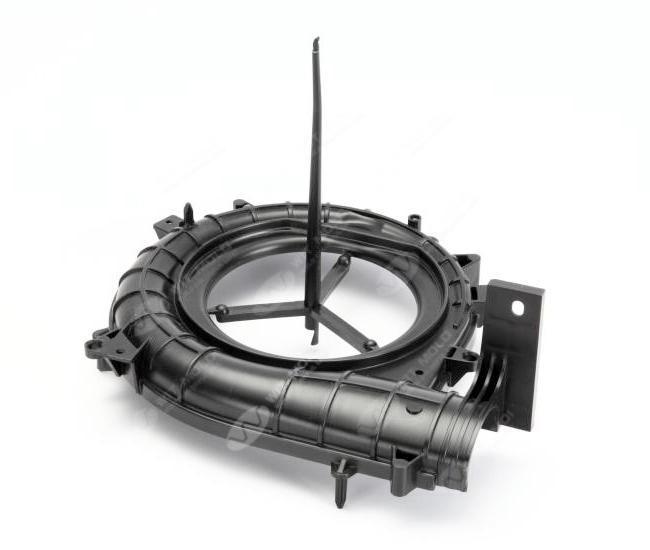Login

Login

Jan. 14, 2025
PBT molding performance
1) PBT has low hygroscopicity, but it is sensitive to moisture at high temperatures. During molding, the PBT molecules will be degraded, the color will become darker, and scars will appear on the surface, so it should usually be dried.
2) PBT melt has excellent fluidity, so it is easy to mold thin-walled and complex-shaped products, but attention should be paid to mold overflow and nozzle drooling.
3) PBT has a clear melting point. When the temperature rises above the melting point, the fluidity will increase suddenly, which should be paid special attention to.
4) PBT has a narrow molding range, crystallizes quickly during cooling, and has good fluidity, which is particularly suitable for fast injection.
5) PBT has a large shrinkage rate and shrinkage range, and the difference in shrinkage rate in different directions is more obvious than other plastics.
6) PBT is very sensitive to notches and sharp corners. Stress concentration is prone to occur at these locations, which greatly reduces the bearing capacity and is prone to rupture when subjected to force or impact. Therefore, this should be noted when designing plastic parts. All corners, especially internal corners, should use arc transitions as much as possible.

7) The elongation of pure PBT can reach 200%, so products with small depressions can be forced to be demolded from the mold. However, after filling with glass fiber or filler, its elongation is greatly reduced. If there is a depression in the product, forced demolding cannot be implemented.
8) The runner of the PBT mold is preferably short and thick when possible, and the circular runner has the best effect. Generally, both modified and unmodified PBT can use ordinary runners, but glass fiber reinforced PBT can only achieve good results when hot runner molding is used.
9) The shearing effect of point gates and latent gates is large, which can reduce the apparent viscosity of PBT melt and facilitate molding. They are commonly used gates, and the gate diameter should be larger.
10) It is best to have the gate facing the core cavity or core, so as to avoid injection and minimize the backfill when the molten material flows in the mold cavity. Otherwise, the product is prone to surface defects and performance degradation.
Main injection molding conditions of PBT
1) Barrel temperature. The selection of barrel temperature is very important for the molding of PBT. If the temperature is too low and the plasticization is poor, it will cause product shortage, dents, uneven shrinkage and dullness. If the temperature is too high, it will cause serious nozzle drooling, overflow, darkening of color, and even degradation. Usually, the barrel temperature is controlled at 240~280℃, and the glass fiber reinforced PBT is controlled at 230~260℃. The nozzle temperature should be controlled at 5~10℃ lower than the temperature of the front section of the barrel.
2) Mold temperature. The mold temperature is directly related to the dimensional stability, warping deformation, molding cycle and crystallinity of the product. PBT is easy to crystallize, and crystallizes quickly even at room temperature, so the mold temperature does not need to be too high, usually 40~60℃, while the mold temperature of glass fiber reinforced PBT is slightly higher, usually 60~80℃.
3) Injection pressure. PBT has low melt viscosity and good fluidity, so a moderate injection pressure can be used, generally 60~90MPa, and glass fiber reinforced PBT is 80~100MPa. Usually the injection pressure increases with the thickness of the plastic part, but it should not exceed 100MPa, otherwise it will make demolding difficult.
43 0 0
Join Us

Comments
All Comments ( 0 )